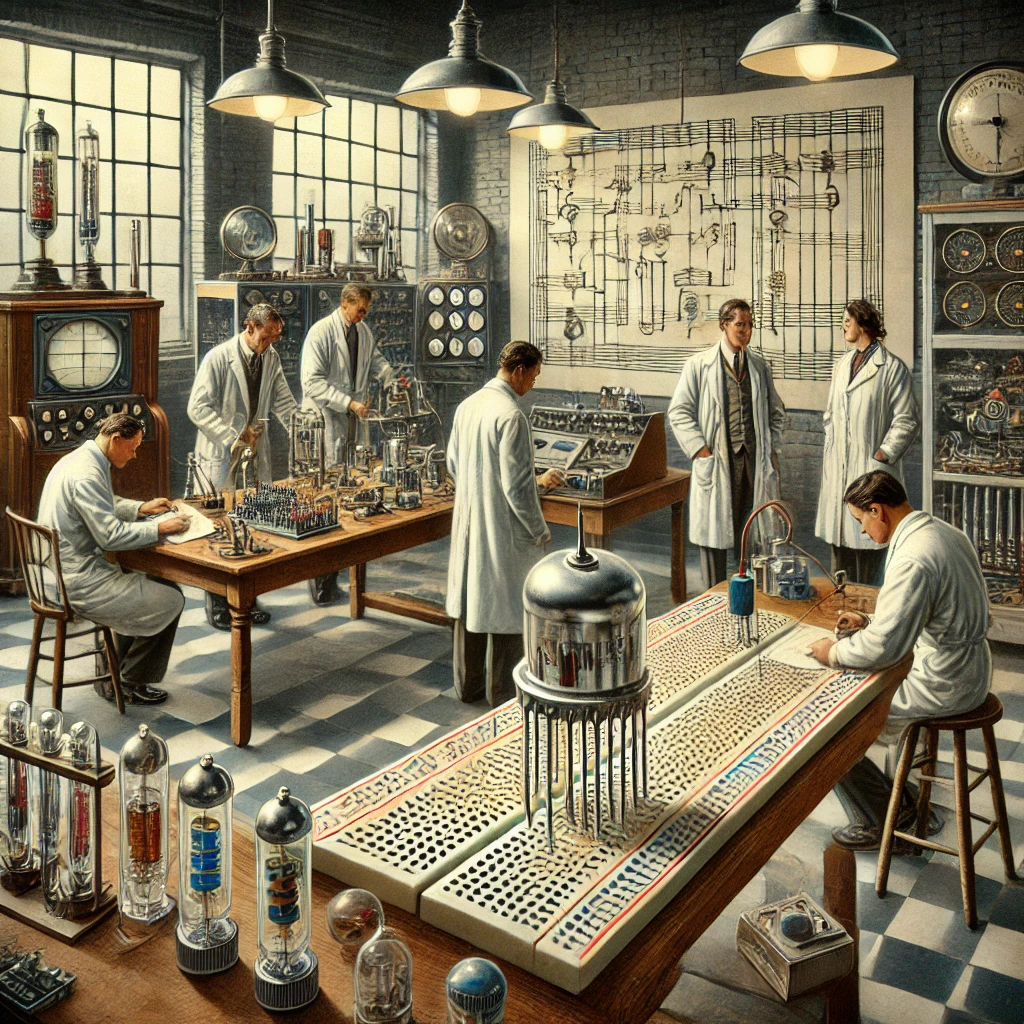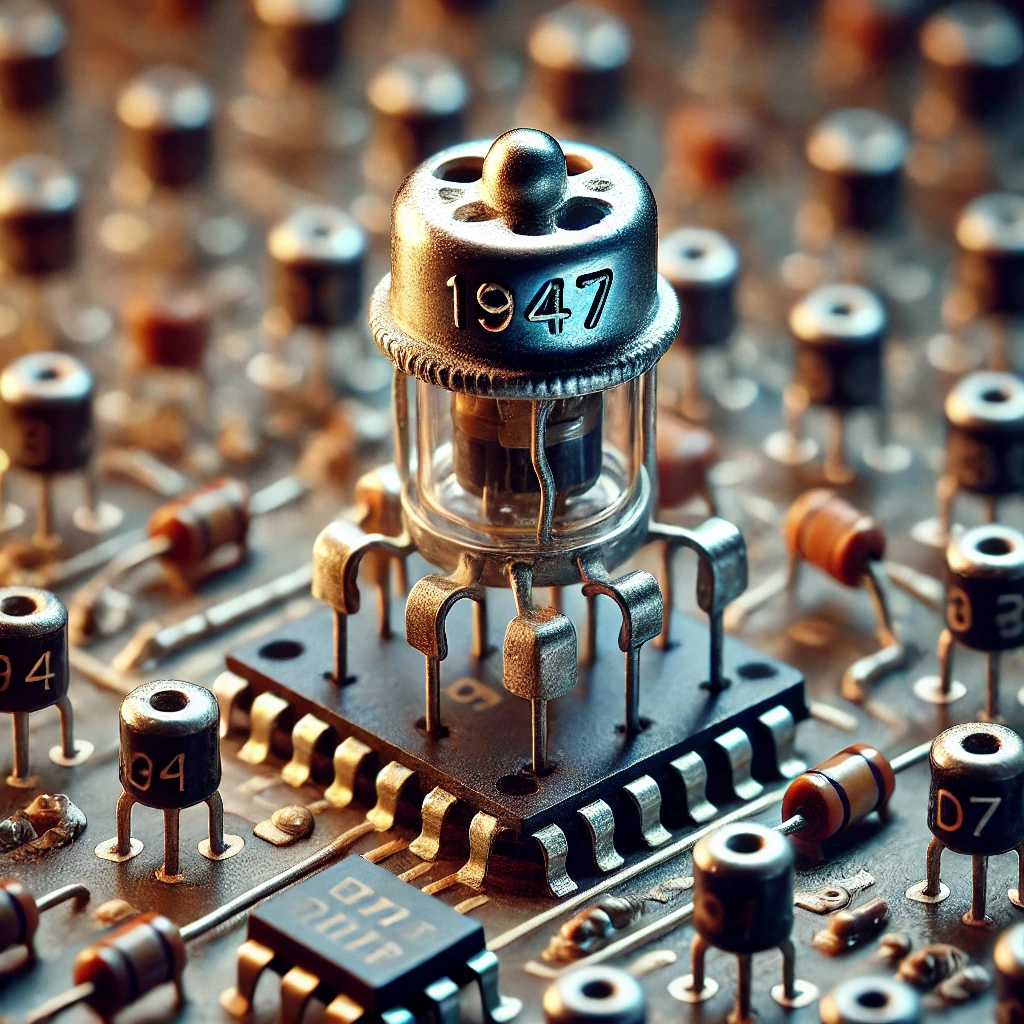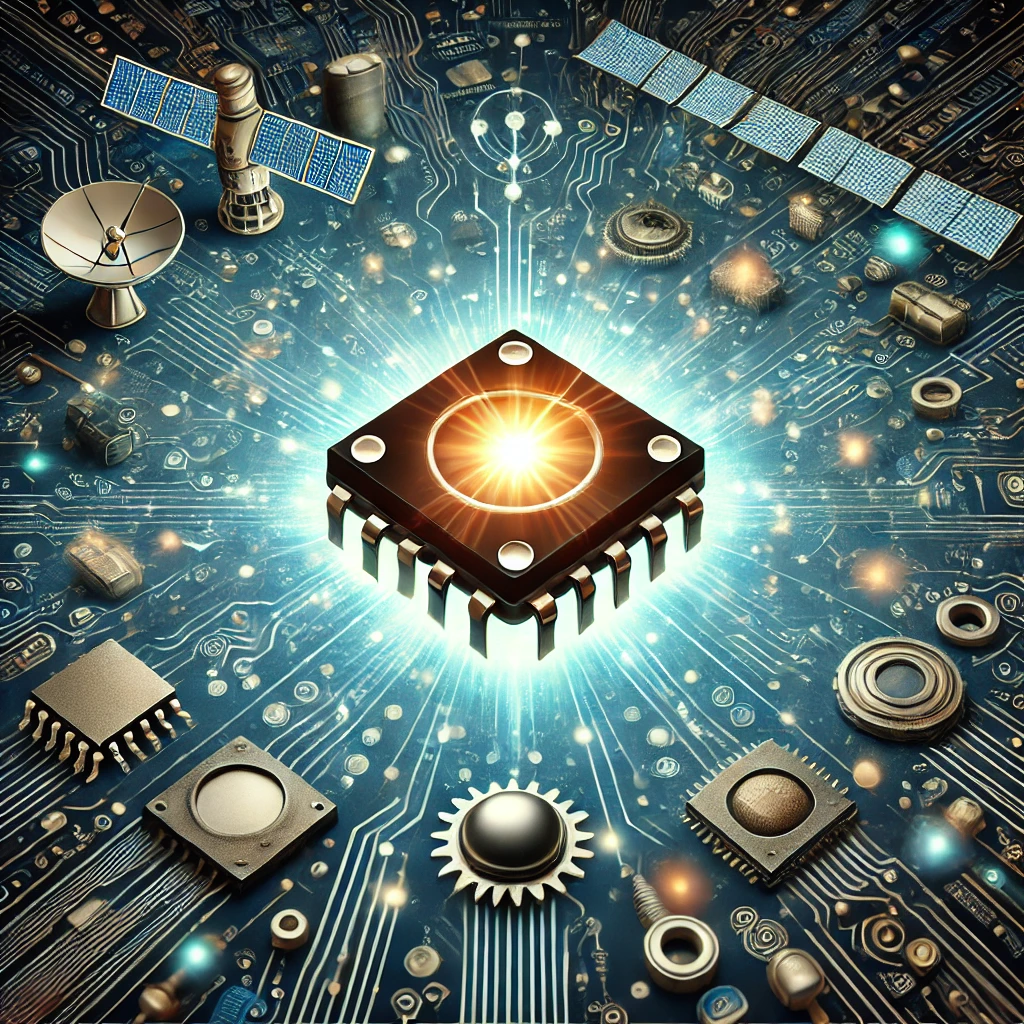A revolutionary breakthrough occurred on December 23rd, 1947, when physicists John Bardeen, Walter Brattain, and William Shockley at Bell Labs successfully demonstrated the transistor. This seemingly small invention would go on to transform the world, laying the foundation for modern electronics and becoming a cornerstone of the digital age. From radios to smartphones, the transistor’s impact on technology and society is immeasurable.

The Birth of the Transistor
The transistor was developed as a solution to the limitations of vacuum tubes, which were bulky, inefficient, and prone to failure. At Bell Labs, Bardeen, Brattain, and Shockley worked tirelessly to create a device that could amplify and switch electrical signals more efficiently. On that historic day in 1947, their efforts bore fruit when they demonstrated a functioning point-contact transistor. This tiny device, made of semiconductor materials, marked a significant departure from the fragile and cumbersome vacuum tube technology.
The name “transistor” itself comes from a blend of “transfer” and “resistor,” reflecting its ability to transfer electrical current while controlling resistance. This innovation was not just a technical achievement but also a symbol of human ingenuity and collaboration. The team’s groundbreaking work earned them the Nobel Prize in Physics in 1956, cementing their place in history.

Transforming Technology
The transistor’s introduction ushered in a new era of technological advancement. Its small size, low power consumption, and reliability made it an essential component in the development of electronics. By the 1950s, transistors were being used in hearing aids, radios, and early computers. The transition from vacuum tubes to transistors enabled the miniaturization of devices, paving the way for portable and affordable consumer electronics.
As transistors evolved, they became the building blocks of integrated circuits, which combine millions of transistors onto a single chip. This development led to the creation of microprocessors, the “brains” of modern computers. The proliferation of transistor-based technology spurred the growth of industries ranging from telecommunications to aerospace, redefining how humans interact with technology and each other.
Lasting Impact

The transistor’s legacy is evident in virtually every aspect of modern life. It is at the heart of devices we use daily, including smartphones, laptops, and medical equipment. The digital revolution, powered by transistors, has transformed communication, education, healthcare, and entertainment. Moreover, advancements in artificial intelligence, robotics, and renewable energy continue to rely on transistor-based technology.
In addition to its technological impact, the transistor has also played a role in shaping global economies and societies. The rise of Silicon Valley, a hub of innovation and economic activity, can be traced back to the semiconductor industry’s roots in transistor development. By enabling rapid technological progress, the transistor has contributed to globalization, bringing people closer together and accelerating the exchange of information.
